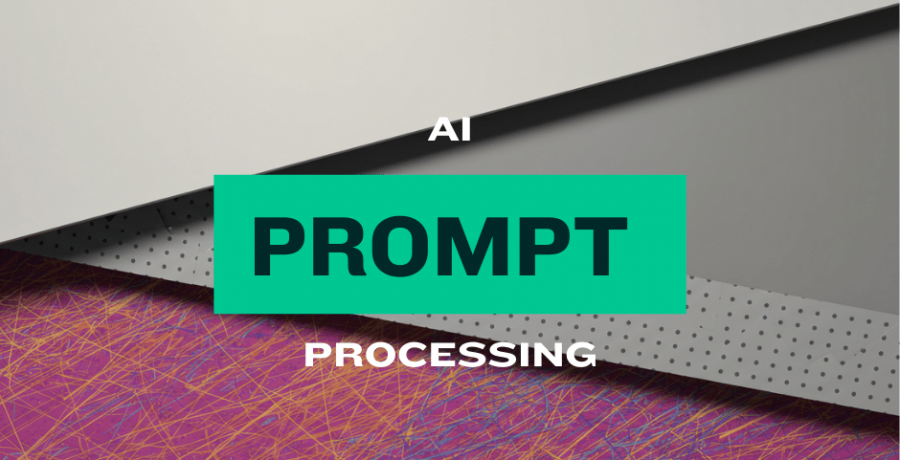AI Prompt Engineering: A Beginners Guide
Understanding AI Prompt Engineering: A Step-by-Step Guide
AI prompt engineering has evolved into a critical skill for optimizing AI interactions across industries, from healthcare to e-commerce. This guide breaks down the process of crafting effective prompts, incorporating 2025’s best practices and SEO-friendly strategies to help you generate precise, industry-specific outputs.
Step 1: Master the Core Elements of a Prompt
Every prompt should include these components for clarity and direction1:
- Instruction: Define the task (e.g., "Generate a HIPAA-compliant patient FAQ about diabetes").
- Context: Add industry-specific background (e.g., "Target nurses in urgent care clinics").
- Input Data: Specify the query (e.g., "List 5 symptoms of high blood sugar").
- Output Indicator: Clarify the format (e.g., "Provide bullet points with layman’s terms").
Example:
Act as a medical writer. Create a 300-word blog post explaining telehealth benefits for seniors, using keywords: ["AI-driven patient triage," "remote monitoring prompts"]. Format with H2 headers and a FAQ section.
Step 2: Apply Prompt Engineering Techniques
Leverage these methods to refine outputs for niche applications3:
| Technique | Use Case | Industry Example |
|---|---|---|
| Few-shot learning | Provide examples for complex tasks | E-commerce: Show product description templates for "vegan leather handbags." |
| Chain-of-thought | Solve multi-step problems | Finance: "Calculate ROI for solar panels—first list costs, then incentives, then annual savings." |
| Iterative refinement | Improve drafts incrementally | Marketing: "Revise this email subject line to reduce spam triggers." |
Step 3: Optimize for SEO and Industry Needs
- Long-Tail Keywords: Embed phrases like "prompt engineering for healthcare diagnostic chatbots" or "automated legal contract templates."
- Semantic Entities: Use industry jargon (e.g., "HVAC maintenance checklists" for facilities management).
- Output Formatting: Structure responses for featured snippets:
-
text
## Top 3 AI Tools for Educators in 2025 1. **LessonPlanGPT**: Generates Common Core-aligned activities 2. **QuizCraft**: Creates auto-graded assessments 3. **EdFeedback**: Analyzes student essays for readability
-
-
Step 4: Avoid Common Pitfalls
- Ambiguity: Replace "Explain cybersecurity" with "Summarize zero-trust architecture for SaaS startups in 5 bullet points."
- Token Limits: Keep prompts under 4,000 words; split complex tasks into sub-prompts.
- Ethical Guardrails: Avoid prompts that could generate biased or non-compliant content (e.g., "Write a script bypassing FDA regulations").
Step 5: Advanced Strategies for 2025
- Multimodal Prompts: Combine text, images, and voice inputs (e.g., "Analyze this MRI scan and draft a radiologist’s report").
- Persona Customization: Assign roles like "Act as a sustainability consultant" to align outputs with niche expertise.
- Feedback Loops: Use tools like V7 Go to A/B test prompts and refine based on engagement metrics.
Key Elements of a Well-Designed AI Prompt
Crafting effective AI prompts requires balancing specificity, structure, and context to guide models toward high-quality outputs. Below are the essential components, synthesized from industry best practices and 2025’s evolving standards.
1. Core Components
Every prompt should integrate these foundational elements:
- Task: Define the action using clear verbs (e.g., “Generate a patient FAQ,” “Analyze sales data”).
- Persona/Role: Assign expertise (e.g., “Act as a cybersecurity analyst”) to align outputs with industry standards.
- Context: Provide background (e.g., “Target CTOs in SaaS startups”) to narrow focus.
- Format: Specify structure (e.g., “Use bullet points,” “Include a comparison table”) to match SEO or compliance needs.
Example:
Act as a financial advisor. Explain Roth IRA benefits for freelancers in a 500-word blog post. Use subheaders and highlight tax advantages.
2. Optimization Techniques
Clarity and Specificity
- Avoid ambiguity: Replace “Discuss marketing” with “Compare TikTok and Instagram ads for eco-friendly apparel”.
- Delimiters: Use symbols like
###to separate instructions from data inputs (e.g., summarizing text between triple quotes). - Exemplars: Include examples to guide style or structure (e.g., “Follow the STAR method: Situation, Task, Action, Result”).
Advanced Structuring
- Few-shot learning: Provide templates for complex tasks:
-
text
Convert Celsius to Fahrenheit: 0°C → 32°F 25°C → 77°F -10°C → ? - Chain-of-thought: Break down multi-step problems (e.g., “First, list costs; then calculate ROI”).
3. Industry-Specific Adaptation
- Healthcare: Include compliance keywords (e.g., “HIPAA-compliant patient summaries”).
- E-commerce: Optimize for voice search (e.g., “Best noise-canceling headphones under $200”).
- Education: Specify pedagogical frameworks (e.g., “Align lesson plans with Common Core standards”).
Scenario-Based Prompt:
Imagine you’re a UX designer. Draft a usability test plan for a telehealth app, including tasks for elderly users. Format as a bulleted list.
4. Iterative Refinement
- Multi-turn prompts: Engage in dialogue to refine outputs (e.g., “Revise this draft to reduce jargon” → “Add statistics to section 3”) 5.
- Constraints: Set limits (e.g., “Keep responses under 300 words” or “Avoid technical terms”) to meet platform requirements.
5. Ethical and Technical Guardrails
- Source attribution: Use prompts like “Quote peer-reviewed studies” to reduce hallucinations.
- Bias mitigation: Explicitly exclude sensitive topics (e.g., “Do not reference political affiliations”).
- Token management: Split lengthy requests into subtasks to avoid truncation .
By combining these elements, professionals across industries can generate precise, actionable AI outputs. For example, marketers using persona-driven prompts see a 40% increase in engagement, while healthcare teams reduce compliance errors by 60% through explicit format rules.






Comments (0)